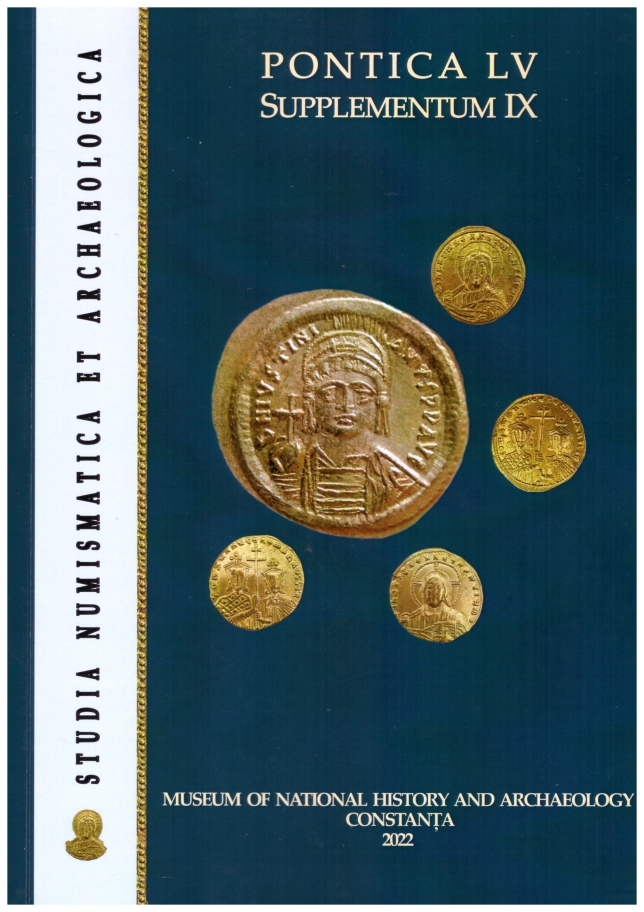CÂTEVA MONETE ROMANE BARBARIZATE DIN DOBROGEA
SOME BARBARIZED ROMAN COINS FROM DOBROGEA
Author(s): Raoul M. ȘeptiliciSubject(s): History, Archaeology, Ancient World
Published by: Muzeul de Istorie Națională și Arheologie Constanța
Keywords: counterfeiting; late Roman coins; private collections; Dobruja; Banat;
Summary/Abstract: The article studies 46 barbarized bronze coins, with no reference of their discovery, except for, at the most, their place of origin. We only know that they are from Dobrogea, from two private collections. They are counterfeits of coins from Constantinus I, Licinius I, Crispus, Magnentius/Decentius, Constantius II, Constantius Gallus, Valentinianus I, Gratianus, Valentinianus II, and Theodosius I. Those are counterfeits of coins from: Constantinus I - 29 pieces of IOVI CONSERVATORI - IC type (1 pc.), VICTORIAE LAETAE PRINC PERP - VLPP type (27 pcs. - 5 from Isaccea, 4 from the north of Tulcea County, 2 pcs. each from Greci, Dunăreni, Horia, Albești and 1 pc. each from Niculițel and Deleni), VOT XX MVLT XXX - V/XX/M/X type (1 pc.); Licinius I - 5 pieces of VLPP type (1 from Negru Vodă area and 1 from Isaccea); Crispus - 1 piece of VLPP type from Negru Vodă area; 1 piece with Magnentius reverse and Decentius obverse of FEL TEMP REPARATIO - FTR type from Dunăreni; Constantius II - 3 pieces of FTR type, FH subtype, of which 1 from Constanța; Constantius Gallus - 1 piece of FTR - FH type from Greci; Valentinianus I - 1 piece GLORIA ROMANORVM - GR type from Deleni; Gratianus - 2 pieces of GR type, of which one from the area between Cumpăna and Valul lui Traian; Valentinianus II - 2 pieces, one of VICTORIA AVGGG - VAGGG type, the other of SALVS REIPVBLICAE - SR type; Theodosius I - 1 piece of GR type. There are two categories of fake coins: Balkan counterfeits and long-distance imports - items no. 25, 30, and 36, and possibly even 41 (others could also fall into this category). These have the prototypes issued in Gaul and were probably forged there or not far from there. Such counterfeits are much more widespread than one would be inclined to presume. They have had a large area of circulation, in a period of money abundance and were no related with any monetary crisis. In the author’s opinion, it is likely that the counterfeiters, respectively their sponsors wanted to monetize some amounts of copper they held in their possession. The counterfeits were produced in the Empire or at most in its immediate vicinity, although the ethnicity of the forger cannot be established. Only a future discovery of a clandestine workshop in the referred areas and during the studied period could give us more indications. Considering the low value of the genuine pieces, we assume that the production of fakes was substantial, as required to make such an enterprise profitable. On the other hand, the small number of imitations makes us presume that many of them were taken out of circulation by the Roman authorities, as their material could be reused.
Journal: Pontica
- Issue Year: 2022
- Issue No: 55 Supp IX
- Page Range: 165-193
- Page Count: 29
- Language: Romanian

